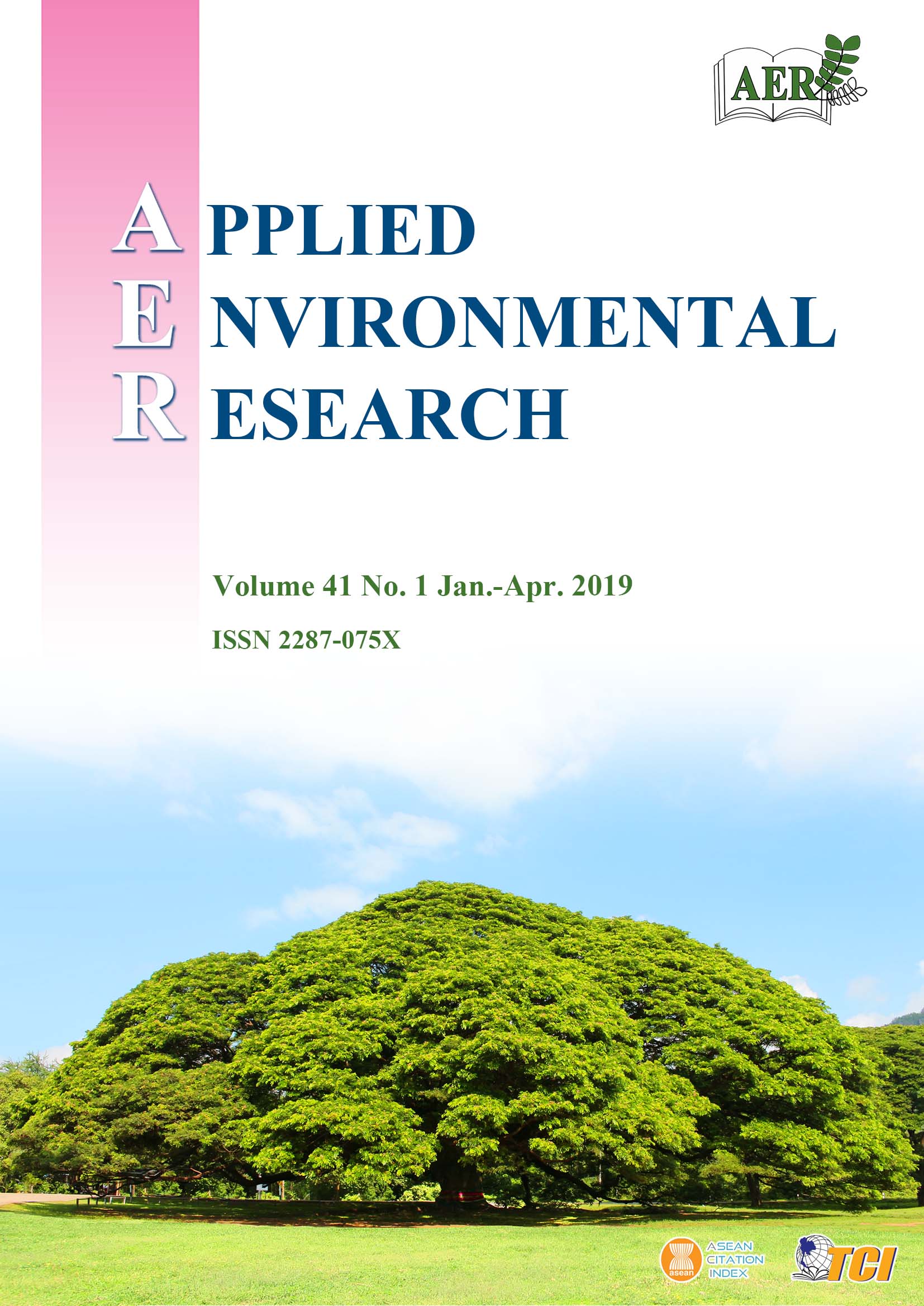Role of Natural Wetlands in Arsenic Removal from Arsenic-Contaminated Runoff
Main Article Content
Abstract
This research aims to identify the role of natural wetlands in arsenic (As) removal. Phu Lek wetland in Loei Province, Thailand, was selected as the study area. Monthly samples of water (144), plant (360), and sediment (144) were collected from the wetland for 24 months. As concentration in the surface water at the wetland inlet was 0.85±0.26 mg L-1, and 0.02±0.01 mg L-1 at the wetland outlet. It was observed that the As level in water decreased significantly along its flow path, with an As removal efficiency of 98 %. As concentration in the sediment was 89.53-356.22 mg kg-1 at the inlet of wetland, but decreased gradually downstream of the water flow. Three dominant emergent plant species were observed in this wetland. As accumulation(0.02-2.37 mg kg-1) was noted in all the parts of the three plant species. As content was the highest in the rootlet(0.00-1.27 mg kg-1) compared to that in foliage (0.00-0.84 mg kg-1), leaf stalk (0.00-1.86 mg kg-1), and rhizome (0.00-2.64 mg kg-1). The level of As in the different vegetation species was in the order Diplazium esculentum > Colocasia esculenta > Lasia spinose. Further, As entrapment in the different plant plants followed the order rootlet > rhizome > foliage > leaf stalk. All the three plant species showed high bioconcentration factors, with values of 0.03-1.28, 0.02-0.93, 0.00-0.84, and 0.00-0.38 at the rootlet, rhizome, foliage, and leaf stalk, respectively, but had low translocation factors (foliage/rootlet: 0.02-0.90 and leaf stalk/rootlet: 0.00-0.44). In summary, As present in the surface water could be effectively removed by the wetland system.
Article Details
How to Cite
Thathong, V., Tantamsapya, N., Yossapol, C., Liao, C.-H., & Wirojanagud, W. (2019). Role of Natural Wetlands in Arsenic Removal from Arsenic-Contaminated Runoff. Applied Environmental Research, 41(1), 8–21. https://doi.org/10.35762/AER.2019.41.1.2
Section
Original Article

This work is licensed under a Creative Commons Attribution-NonCommercial 4.0 International License.
Published articles are under the copyright of the Applied Environmental Research effective when the article is accepted for publication thus granting Applied Environmental Research all rights for the work so that both parties may be protected from the consequences of unauthorized use. Partially or totally publication of an article elsewhere is possible only after the consent from the editors.

